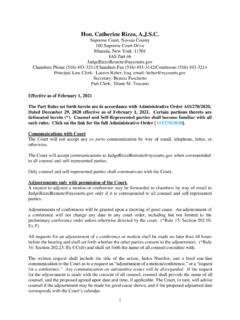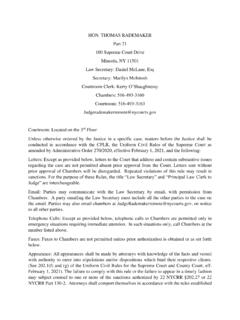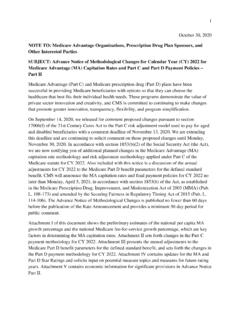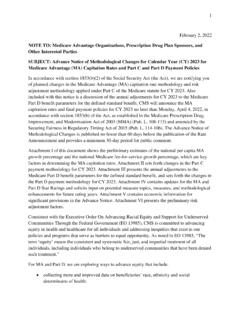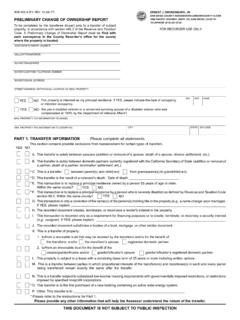Transcription of Part I Section 195.–Start-up Expenditures (Also §§ 162 ...
1 part ISection 195. start -up Expenditures (Also 162, 263; 26 CFR , (a)-1) Rev. Rul. 99-23 ISSUEWhen a taxpayer acquires the assets of an active trade or business, whichexpenditures will qualify as investigatory costs that are eligible for amortization as start -up Expenditures under 195 of the Internal Revenue Code? FACTSS ituation 1In April 1998, corporation U hired an investment banker to evaluate thepossibility of acquiring a trade or business unrelated to U s existing business. Theinvestment banker conducted research on several industries and evaluated publiclyavailable financial information relating to several businesses.
2 Eventually, U narrowedits focus to one industry. The investment banker evaluated several businesses withinthe industry, including corporation V and several of V s competitors. The investmentbanker then commissioned appraisals of V s assets and an in-depth review of V sbooks and records in order to determine a fair acquisition price. On November 1,1998,-2-U entered into an acquisition agreement with V to purchase all the assets of V. U didnot prepare and submit a letter of intent, or any other preliminary agreement or writtendocument evidencing an intent to acquire V prior to executing the acquisitionagreement.
3 Situation 2In May 1998, corporation W began searching for a trade or business to anticipation of finding a suitable target to acquire, W hired an investment banker toevaluate three potential businesses and a law firm to begin drafting regulatory approvaldocuments for a target. Eventually, W decided to purchase all the assets ofcorporation X. W and X entered into an acquisition agreement on December 1, 1998. Situation 3In June 1998, corporation Y hired a law firm and an accounting firm to assist inthe potential acquisition of corporation Z by performing certain services that the partieslabeled as preliminary due diligence.
4 These due diligence services includedconducting research on Z s industry (including information relating to competitors of Z),and analyzing financial projections for Z for 1998 and 1999. In September 1998, at Y srequest, the law firm prepared and submitted a letter of intent to Z. The offer containedin the letter of intent resulted from prior discussions between Y and Z, and specificallystated that a binding commitment with respect to the proposed transaction would resultonly upon execution of an acquisition agreement. Thereafter, the law firm andaccounting firm continued to provide services labeled as due diligence, including areview of Z s internal documents relating to insurance policies, employee agreements,-3-and lease agreements, an in-depth review of Z s books and records, and preparation ofan acquisition agreement.
5 On October 10, 1998, Y entered into an acquisitionagreement with Z to purchase all the assets of Z. In each of the three situations, the trades or businesses of the targets are activetrades or businesses unrelated to the trades or businesses of U, W, and Y. U, W, andY each use an accrual method of accounting and a calendar taxable year. Each of theacquisition agreements entered into by U, W, and Y were subject to customaryconditions of closing. Finally, U, W, and Y each completed the acquisitions in 1998and timely elected on their 1998 federal income tax returns to amortize start -upexpenditures over a period of not less than 60 months under 195(b).
6 LAW AND ANALYSISS ection 195(a) provides that, except as otherwise provided in 195, nodeduction is allowed for start -up Expenditures . Section 195(b) provides that start -up Expenditures may, at the election of thetaxpayer, be treated as deferred expenses that are allowed as a deduction proratedequally over a period of not less than 60 months (beginning with the month in which theactive trade or business begins). Section 195(c)(1) defines start -up expenditure , in part , as any amount (A) paidor incurred in connection with investigating the creation or acquisition of an active tradeor business, and (B) which, if paid or incurred in connection with the operation of anexisting active trade or business (in the same field as the trade or business referred toin subparagraph (A)), would be allowable as a deduction for the taxable year in which-4-paid or incurred.
7 Thus, in order to qualify as start -up Expenditures under 195(c)(1), ataxpayer s investigatory costs must satisfy the requirements in both 195(c)(1)(A)and (B). In addition, the term start -up expenditure does not include any amount withrespect to which a deduction is allowable under 163(a), 164, or 162 and (a) of the Income Tax Regulations allow a deductionfor all the ordinary and necessary expenses paid or incurred during the taxable year incarrying on any trade or business. Courts generally have construed 162 ascontaining five conditions that an expenditure must meet to qualify for deduction.
8 Theexpenditure must be (1) an expense, (2) ordinary, (3) necessary, (4) paid or incurredduring the taxable year, and (5) made to carry on a trade or business. SeeCommissioner v. Lincoln Savings and Loan Ass'n., 403 345 (1971). Sections 263 and (a)-1(a) provide that no deduction is allowed for anyamounts paid out for new buildings or for permanent improvements or bettermentsmade to increase the value of any property or estate. Section (a)-2(a) providesthat capital Expenditures include the cost of acquisition, construction, or erection ofbuildings, machinery and equipment, furniture and fixtures, and similar property havinga useful life substantially beyond the taxable provisions such as 162(a) and 263(a), the Code generallyendeavors to match expenses with the revenues of the taxable period to which theexpenses are properly attributable, thereby resulting in a more accurate calculation ofnet income for tax purposes.
9 See, , INDOPCO, Inc. v. Commissioner, 503 79(1992).-5-In describing the law prior to 195, Congress explained that investigatoryexpenses, which were costs incurred in seeking and reviewing prospectivebusinesses prior to reaching a decision to acquire or enter any business, normallywere not deductible because they were not incurred in carrying on a trade or businesswithin the meaning of 162. See Rep. No. 1278, 96 Cong., 2d Sess. 9 (1980)th(House Report); S. Rep. No. 1036, 96 Cong., 2d Sess 10 (1980) (Senate Report). thThe carrying on a trade or business requirement was not met where investigatoryexpenses were incurred by a taxpayer who was not yet carrying on any trade orbusiness, or where a taxpayer was carrying on a trade or business but incurred costs toinvestigate the creation or acquisition of another, unrelated trade or business.
10 Id. However, a taxpayer incurring costs to investigate the expansion of an existingbusiness generally could deduct those costs under 162, assuming the otherrequirements of that Section were met. This disparity in the tax treatment ofinvestigatory expenses resulting from the carrying on a trade or business requirementdiscouraged taxpayers from investigating the creation or acquisition of new trades orbusinesses. Section 195 was enacted, in part , to minimize this disparity and therebyencourage formation of new businesses by providing an amortization deduction foreligible investigatory expenses.











